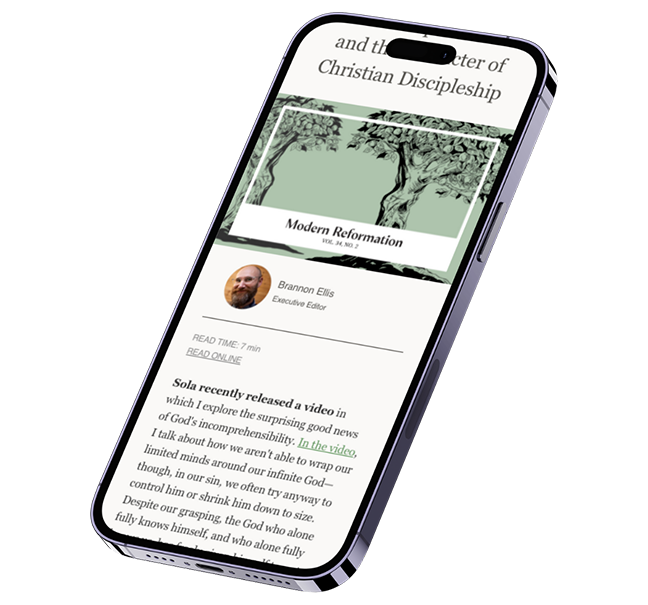In 1826, the Princeton theologian Charles Hodge traveled to Europe because he felt his facility in foreign languages was terribly deficient. During Hodge's visit, Archibald Alexander warned him to "remember that you live in a poisoned atmosphere," because of the rising tide of liberal Protestantism. "If you lose the lively and deep impression of divine truth, if you fall into skepticism or even into coldness you will lose more than you gain from the German professors and libraries." Hodge later noted that Germany had more religious diversity than he had first imagined. Even so, Alexander's remarks reflect the commonplaces of a centuries-old religious divide, one that is both geographical because of the massive Atlantic but also deeply ideological.
This same sentiment is still with us today since some conservative evangelicals have the same concerns about the theology coming out of Europe, as well as about American academic theology allegedly corrupted by German liberalism. But many Europeans have reservations about American religion. How has this situation of mutual mistrust come about?
This is the focus of Thomas Albert Howard's masterful historical study of European religious sentiments toward American religion. This book is timely and necessary because, despite a current explosion in technology that has made the world seem smaller, people speak of a widening Atlantic gap without paying attention to the deeper historical sources, particularly the religious. To explain this religious divide, Howard draws theoretically on Charles Taylor's notion of the "social imaginary," defined as "the broader and deeper, often inchoate and prearticulate, environing backgrounds of thought." Howard claims that without such a work in cultural and intellectual history of perceptions and interpretations, there will be a deficit in understanding the present situation.
The book has two components. First, Howard analyzes negative assessments of American religion to grasp the deeper currents of contemporary European anti-Americanism. Second, he retrieves a more positive view of American religion through the eyes of underappreciated European interpreters.
The first section comprises two negative critiques of American religion. The first arose from the Romantic, traditional point of view that regarded American religion as divisive, inorganic, populist, anti-institutional, indifferent, and commercial. He brings together a chorus of voices denouncing American theology for its failure to be truly religious, as well as to produce a "theologian of world renown."
The second negative critique comes from a secularist vantage point. Under this critique, there are three different branches: 1) leftist historical thought; 2) Marxist and Hegelian intellectuals; and 3) left-leaning European liberals. From these branches emerged the "secularization thesis," which regards America as "a kind of oafish, pious misfit swimming against the (secularizing) tide of history." Many readers will likely find this section unfamiliar and difficult reading, but it is worth the investment of time and critical for help digesting present debates about the secularization of religion and society.
Howard devotes the last section to two lesser known intellectuals: the Reformed Protestant historian Philip Schaff and the Catholic philosopher Jacques Maritain. Perhaps this section is the most interesting and original part of the book as it moves beyond the evangelical overemphasis on Alexis de Tocqueville's analysis of American religion. Howard argues that the pairing of these very different intellectuals provides an insightful and complementary understanding of American religion. They both had sympathy for America and its project of religious freedom. Unlike other European observers, they traveled across the Atlantic (Howard dubs them "transatlantic personalities") many times and lived in the United States, so their commentary carries a degree of gravitas. Despite many sympathies, they criticized the cultural and religious life in American democracy. Nevertheless, their reflections caused them to reevaluate their European heritage and to defend American religious freedom and the virtues associated with it. Because of these factors, Howard persuasively contends, they have "a much broader relevance for modern intellectual history, generally, and for the history of European-American transatlantic exchanges, in particular"’even though they approached the question differently.
When Schaff first visited the United States in 1844, he voiced stereotypical traditionalist misgivings about American religion, describing it as highly individualistic in its approach to faith. He called it a "sect plague" since it rejected a catholicity and tradition. Over time, however, Schaff attenuated his critique. He eventually admitted that America might be "the cradle of a new and splendid reformation" for its disruption of church-state relations, principle of religious subjectivity, and religious toleration. Schaff wrote several works in German to explain American religion abroad, and they were rapidly published in English and ought to be ranked among the most informative evaluations of the religious divide by a foreigner.
As a Roman Catholic, the young Maritain thought the Reformation was an "immense disaster for humanity," though he did not specifically comment on America. After moving to America in 1940, however, he began to see the New World as a place of religious progress for individuals made in God's image, in contrast to European communism and fascism that swallows the individual. Denying the charge that America was anti-intellectualist, Maritain (himself a democratic theorist) argued that natural law and transcendence were more in focus in America.
In conclusion, Howard encourages us to recognize that "historical knowledge possesses at once the potential to serve and complicate" the "hard, high purposes" of pluralistic global democracy. Nevertheless, this is the context in which we live, namely, ever-expanding modernity. If we want to think more deeply about religion and democratic forms of government on an international level, then the historical knowledge presented in this book can be a vital tool to encourage dialogue.






